
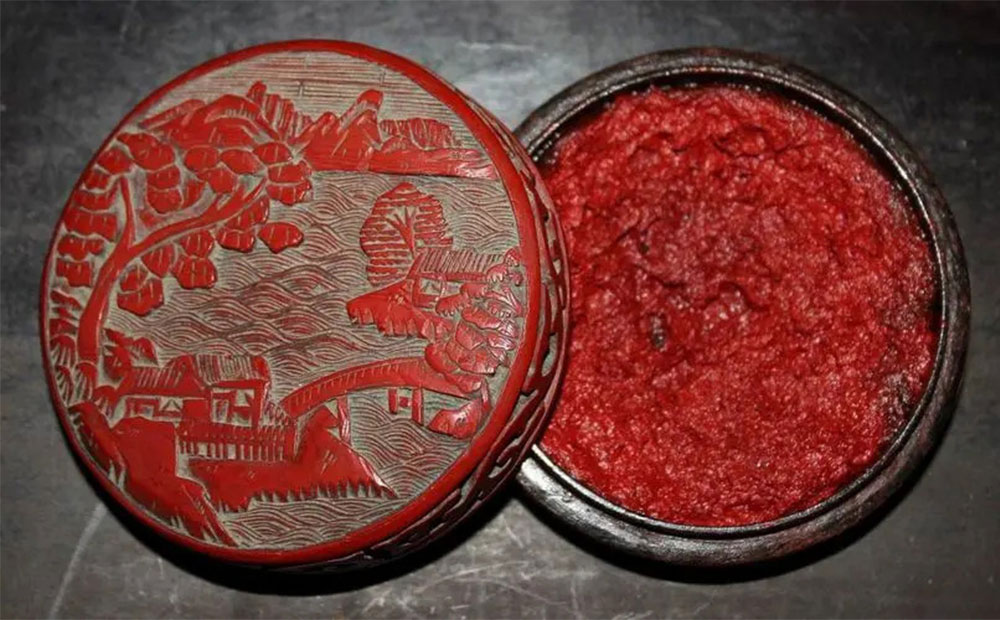
Historical background
Seal mud was used in the Spring, Autumn, Qin and Han Dynasties. At that time, the "seal mud" was different from today's inkpad. It is made of clay. It is usually rolled into mud balls and soaked with water when used temporarily. At that time, official documents and letters were written on bamboo slips and wooden slips with lacquer. In order to prevent secret disclosure or private disassembly during transmission, a piece of wood with square groove is added outside the written bamboo slips, and then the rope is used to tie them up. Then the knot is put into the square groove, sealed with a ball of wet mud, and then the seal stamp is used as the seal for inspection. This kind of mud pill is called sealing mud, also called mud sealing.
The method of sealing letters with mud balls has been used until the Wei, Jin and Southern and Northern Dynasties.
After the Sui and Tang Dynasties, with good paper, all public and private letters were replaced by paper, and bamboo slips were abolished. The old practice of sealing letters with mud no longer applies.
As a result, people changed to use water to mix cinnabar on the printing surface and on the paper. This is the embryonic form of inkpad. As the cinnabar is easy to fall off after water drying, in the Yuan Dynasty, people began to mix cinnabar with oil, and then it gradually developed into our current ink pad.
The main raw materials for making inkpad are cinnabar, red fat, wormwood, castor oil, musk, borneol, etc. It has many varieties, mainly pure cinnabar print, and its color is dark brown red. Some people call it birthday. It is an inkpad made of cinnabar deposited at the bottom of the mortar when bleaching cinnabar. It is thick, calm and beautiful.
There is also pure vermilion ink pad. It is made by mixing the cinnabar fine powder in the upper layer with Acer, oil, etc. during bleaching (usually tens of kilograms of cinnabar ore can only bleach one kilogram of cinnabar, so the price of cinnabar inkpad is usually higher than that of cinnabar inkpad). It is slightly red and yellow, just like the color of ripe orange peel, very elegant.
In addition to pure cinnabar and pure cinnabar, different raw materials are added to the cinnabar or cinnabar to make it different in color, elasticity and toughness, including Zhenquan, Guanming, Charm, Tongming, Yuanquan, etc.
In addition, there are antique inkpad and black, blue, green inkpad.
Choice
Those who are good at using ink pad choose ink pad just as those who are good at writing choose ink. Its quality directly affects its artistic effect. Just as the saying goes, the slightest difference is a thousand miles away. Therefore, when purchasing ink pad, it should be noted that the ink pad used for seal engraving or calligraphy and painting is not the ink pad sold by general stationery stores. The ink pad sold by the stationery shop cannot express the true face of the seal because of its rough texture, heavy oil and floating color. In fact, it is not inkpad but can only be called printing color. Therefore, it can never be used as a seal sample or a seal for calligraphy and painting.
A good inkpad is thick, bright, delicate, and bright in color. At present, the inkpad made by Fujian Zhangzhou Babao Inkpad Factory is the best, and together with Xiling Inkpad made by Hangzhou Xiling Inkpad Society and Longquan Inkpad made by Changzhou Jingyu Hall, it is called "China's Three Major Inkpad Societies".
In addition, inkpad made by Suzhou Jiangsixu Hall, Huizhou Yishoutang Hall, Beijing Rongbaozhai, etc. are also available. Nowadays, there are many kinds of inkpad sold in the calligraphy and painting shops on the market, with prices ranging from 10 yuan 30 grams to 100 yuan 30 grams. However, as long as it is fine, thick and bright, bright and heavy, and does not leak oil, it can be used.
Do not use purple clay porcelain for the preservation of ink pad, because it can absorb oil and easily dry the ink pad. It is also not allowed to use steel, copper, iron and other metal boxes for storage. As the ink pad contacts with metal objects, it will turn black over time. Porcelain jars or jade boxes are the most suitable for storing ink pad and should be placed in a shady place. Press and lift gently when using. After each use, cover the cylinder cover to prevent dust from entering and damaging the color.
In addition, the seal can only be stained with mud after being wiped clean. During the storage of ink pad, the ink pad must be turned over and stirred with ink bars every ten days or so. The cinnabar is heavy and the oily body is light and floating. If the cinnabar does not move for a long time, the sand body will sink and easily form a hard lump, so the ink pad must be stirred frequently to make it even. Therefore, it can be durable.
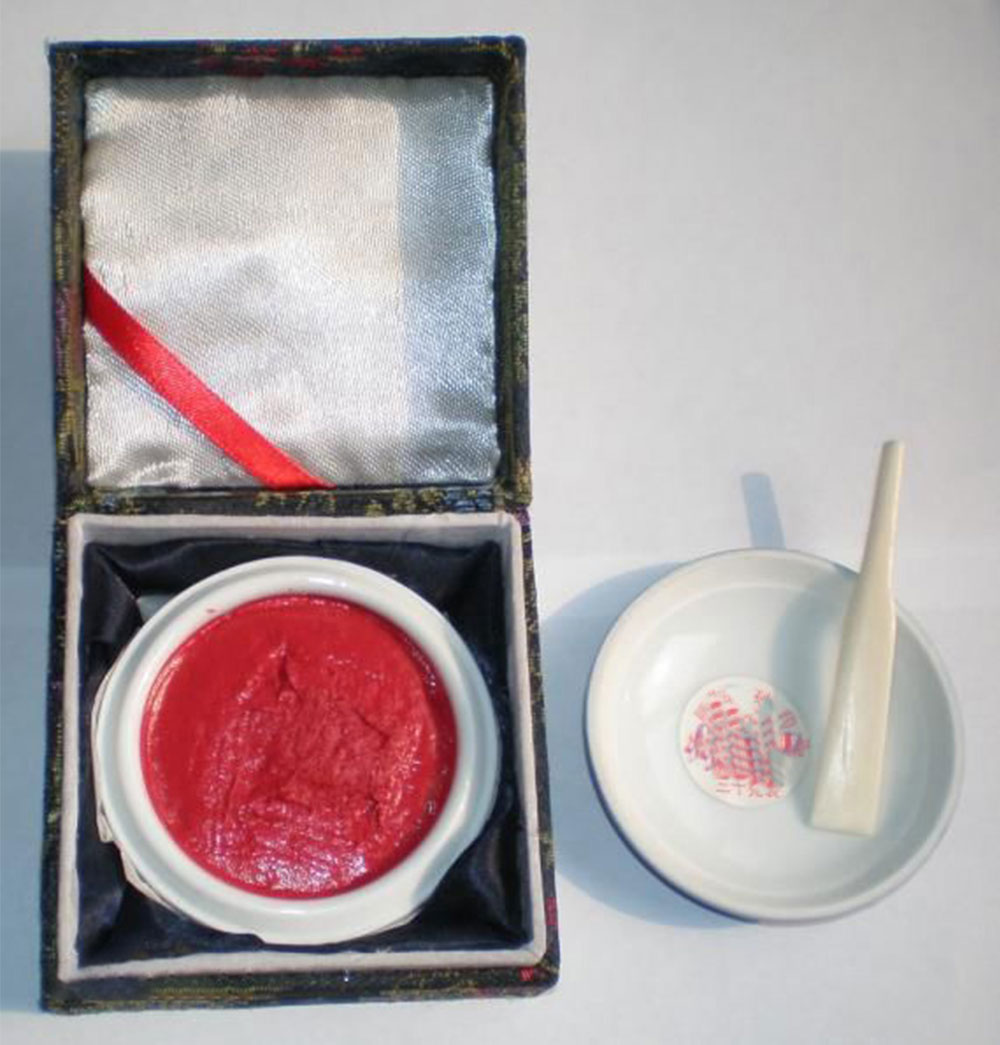
Introduction to classification
Inkpad is a medium to convey seal art, and its quality directly affects the effect of seal art expression. The ink pad with good texture can be printed with fresh and calm color, three-dimensional sense and spirit. When the ink pad seal with poor texture is printed, it will appear dull or light in color. Some oil stains will leach out, making the seal more obscure and ugly. There are many varieties of inkpad, and the red ones are generally divided into cinnabar, vermilion, and whore.
Vermilion inkpad
Pure cinnabar print, its color is dark brown red. Some people call it birthday. It is an inkpad made of cinnabar deposited at the bottom of the mortar when bleaching cinnabar. It is thick, calm and beautiful.
After the seal is engraved, it should be sealed with pure cinnabar ink pad to fully present the beauty of printing art. Cinnabar ink pad is mainly composed of cinnabar, printing oil and moxa wool. The inkpad sold in the market is famous for the Longevity Star inkpad produced by Zhangzhou Babao inkpad factory, the Qianquan inkpad produced by Hangzhou Xiling Seal Engraver Society, and the Rongbaozhai inkpad produced by Beiping Rongbao Seal Engraver Society. The Qianquan inkpad produced by Shanghai Xiling Seal Engraver Society is also famous for its arrow cluster, mirror, beauty and brightness. (It is homophonic to the bamboo arrow, gold face, charm and Guanming of Zhangzhou Eight Treasure Inkstick, while the gold face and Guanming of Zhangzhou Eight Treasure Inkstick series are Zhu Xuan Inkstick.) It is available in general calligraphy, painting and seal cutting stores.
Note: Eight treasure inkpad: it is vermilion in color and bright; Delicate and thick, with fragrant smell; The cold in winter does not congeal, and the heat in summer does not escape; Hot and dry, rainy and mildew free; The print is clear and never fades.
Vermilion ink pad
Ge Kiln inkpad box
Pure vermilion ink paste, which is made by mixing the vermilion powder in the upper layer with Acer, oil, etc. during bleaching (usually tens of kilograms of vermilion ore can only bleach one kilogram of vermilion, so the price of vermilion ink paste is usually higher than that of vermilion ink paste), is slightly red and yellow, like the color of ripe orange peel, very elegant. In addition to pure cinnabar and pure cinnabar, different raw materials are added to the cinnabar or cinnabar to make it different in color, elasticity and toughness, including Zhenquan, Guanming, Charm, Tongming, Yuanquan, etc. No matter what the name is, as long as it is thick, bright, delicate, bright and calm, it is the best. In the market, it is generally better to pay 30 or 40 yuan or two. Generally, for beginners, it is OK to buy three to five yuan or two. There are many cities producing ink pad, among which Zhangzhou, Shanghai, Hangzhou, Suwai and other places have better products, which can be used as long as the color is cool without oil seepage. In the past, some people liked self-control! The ink pad is made from the fiber of "Ai" leaf, sand killing and refined vegetable oil (or castor oil). The method is complex (detailed introduction can be referred to in books such as Introduction to Seal Cutting published before liberation), and it is not arrogant now.
other
There are also antique ink pad (dark brown) and black, blue, green ink pad, which are rarely used for special occasions. In recent years, Zhangzhou Babao inkpad factory has developed gold inkpad and silver inkpad. It abandons the complicated operation of printing first and then smearing "gold powder", and can be used from the start. The use method and ordinary cinnabar inkpad are all right. If you are interested, you can reserve it. The ink pad should be kept in a porcelain box. Do not put it in a metal box. As the ink pad contacts with metal objects, A will turn black after a long time, affecting the quality. After using inkpad for a period of time; It is necessary to mix with printing bar to mix oil, sand and wormwood wool together, otherwise it is easy to bind. Due to the special materials (pure natural ores), good ink pad for painting and calligraphy needs to be frequently adjusted and maintained to keep the minerals fully integrated with mugwort and oil, just like flowers. If the maintenance is improper, it will take a lot of effort to re punch and properly add processed oil for preparation In cold winter, ink pad is easy to freeze and become dry and hard. Before use, it should be dried in the sun for some time to make it soft before reuse.
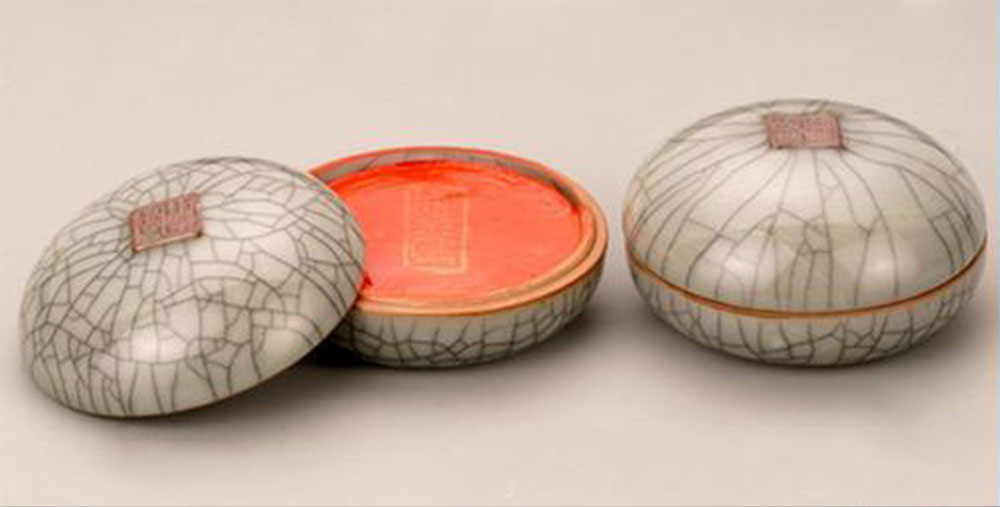
Ink pad selection
How to select inkpad?
Gold dragon pen cylinder inkpad box
Ink pad is the material for sealing. In general, the ink pad used for Chinese seal is different from the ink used for official documents. The former is mainly made of wormwood fiber, cinnabar and castor oil as basic raw materials through fine processing. The seal printed by a good ink pad is bright and calm in color, has a three-dimensional sense, does not leak oil, and the text is eye-catching and clear. In addition to red ink pad, there are also various special ink pads, such as green, black, brown, blue, etc. In addition to color, we should pay attention to the quality and origin of inkpad. Shanghai, Hangzhou, Zhangzhou and Suzhou all produce high-quality inkpad. Xiling inkpad produced in Shanghai and Zhangzhou Eight Treasures inkpad produced in Zhangzhou, Fujian are two major categories of Chinese inkpad.
The choice of pigment mainly depends on whether it will fade and not leak oil. The selection of oil is mainly based on the consideration of its dryness, viscosity and permeability. The choice of fiber is the strength of elastic force and the capacity of absorbing color paste. Therefore, a good ink pad should be easy to seal, easy to paper, non bleeding, and basically non fading.
Ink pad can be divided into painting ink pad and office ink pad, which can also be called high-quality ink pad and ordinary ink pad. The ink pad used for painting and calligraphy should be called high-quality products. The print of the ink pad for calligraphy and painting must be clear, not fade, not bleed; The superior seal characters are not only clear, but also divine, which can faithfully reflect the author's knife art. At the same time, the solid surface of calligraphy and painting inkpad is delicate, which can form a ball when mixed and has elastic force. In the previous chapter, the paper is easy and even. The ink pad for painting and calligraphy should be slightly wet, and the ink pad for seal cutting should be slightly dry. The ink pad used for office work is generally called ordinary ink pad, which only requires clear seal and easy paper stamping.
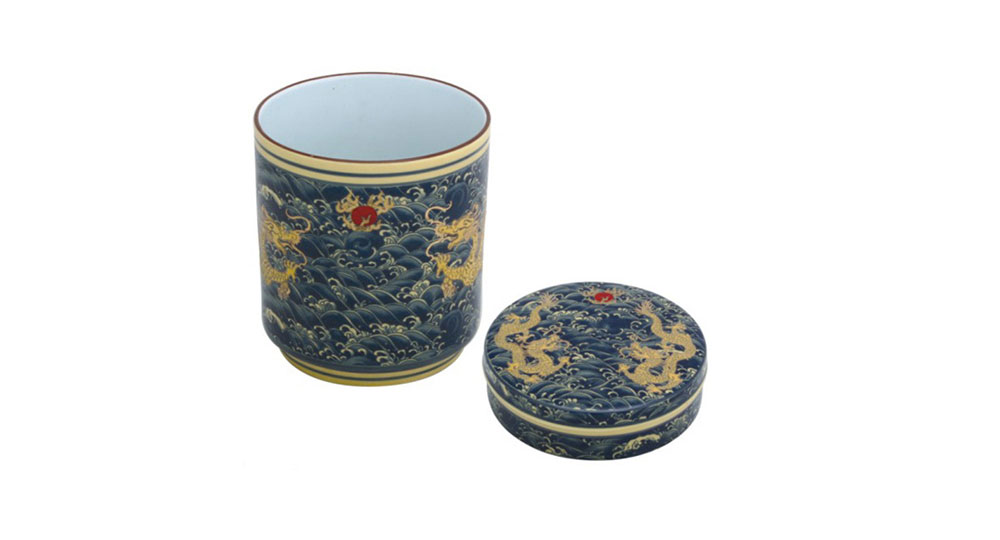
Inkpad process
The inkpad is the treasure of our country's study, which has a long history and is suitable for wooden seals and stone seals. The quality requirements are bright color, durable and fine quality.
Castor oil 60g
Yellow inkpad
Yellow inkpad
Bright red (or magenta, lead) 11g white clay (finely ground and screened) 10g
Wormwood wool (i.e. wormwood is dried, hard stalks are removed, and fine wool is rolled by machine) 18g
Borneol 1g
Preparation method: put all kinds of raw materials into the tank in the order of the above formula, mix them with wooden sticks first, then put them on the rolling mill, and roll them repeatedly for many times to form muddy ink.
Note: Castor oil is a dispersant, white clay is a filler, bright red and other pigments are color developing agents, wormwood is an adsorbent, and borneol is used to prevent corrosion and add fragrance. (This method is applicable to homemade inkpad. At present, each inkpad adopts different core processes, and the fineness is far greater than this method. The formulation of Zhangzhou Babao inkpad is a national level II secret, and the specific method is not known yet.)
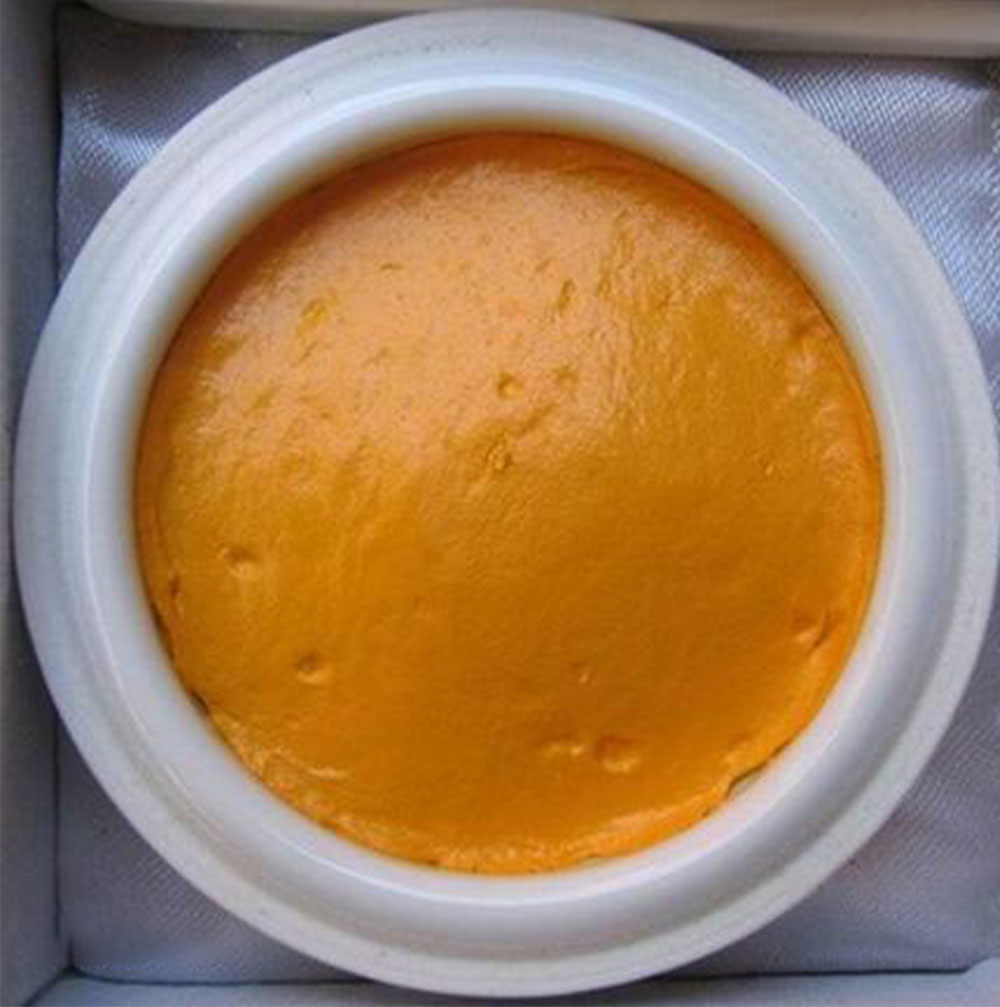
Use of inkpad
brief introduction
How to use good printing mud? Good ink pad not only has good quality, but also needs to be used in a good way to obtain the best effect.
Tipping inkpad
Generally, inkpad pigments are divided into light organic pigments and heavy organic pigments. The material of the same organic pigment or the same inorganic pigment is sometimes different in weight. The proportion of pigment and grease is more different.
The blending of grease, pigment and fiber is only a physical reaction, so layering will occur after a long time of use. Light pigments will slowly rise with grease, and heavy pigments will slowly sink. As time goes on, layering will become more and more serious. As time goes on, oily color paste will appear on the surface of the inkpad, which will become rancid and viscous. The sinking heavy color paste gradually agglomerates and hardens. This kind of change bruises the fiber to varying degrees, and finally causes the fiber to rot, while the inkpad becomes a hard lump or a very viscous colored paste, which cannot be used. In order to make the inkpad always in the best state, it must always be adjusted correctly. At least once every 3 months.
The so-called correct turning refers to the following points that should be paid attention to when turning:
Turning tools: smooth ox horn pieces, smooth bamboo pieces or smooth plastic strips.
Turning gesture: turning up and down in one direction, not cutting or rotating.
Transposition
The pigment, grease and fiber with different specific gravity shall be fully mixed and interwoven into a whole.
Turning the color paste during use can improve the imbalance of the proportion caused by the occupation of the color paste surface. Winter turning can improve the softness and hardness of the ink pad, making it easy to seal on the ink pad, easy to drop the paper, and even.
Use of inkpad
brief introduction
How to use good printing mud? Good ink pad not only has good quality, but also needs to be used in a good way to obtain the best effect.
Tipping inkpad
Generally, inkpad pigments are divided into light organic pigments and heavy organic pigments. The material of the same organic pigment or the same inorganic pigment is sometimes different in weight. The proportion of pigment and grease is more different.
The blending of grease, pigment and fiber is only a physical reaction, so layering will occur after a long time of use. Light pigments will slowly rise with grease, and heavy pigments will slowly sink. As time goes on, layering will become more and more serious. As time goes on, oily color paste will appear on the surface of the inkpad, which will become rancid and viscous. The sinking heavy color paste gradually agglomerates and hardens. This kind of change bruises the fiber to varying degrees, and finally causes the fiber to rot, while the inkpad becomes a hard lump or a very viscous colored paste, which cannot be used. In order to make the inkpad always in the best state, it must always be adjusted correctly. At least once every 3 months.
The so-called correct turning refers to the following points that should be paid attention to when turning:
Turning tools: smooth ox horn pieces, smooth bamboo pieces or smooth plastic strips.
Turning gesture: turning up and down in one direction, not cutting or rotating.
Transposition
The pigment, grease and fiber with different specific gravity shall be fully mixed and interwoven into a whole.
Turning the color paste during use can improve the imbalance of the proportion caused by the occupation of the color paste surface. Winter turning can improve the softness and hardness of the ink pad, making it easy to seal on the ink pad, easy to drop the paper, and even.
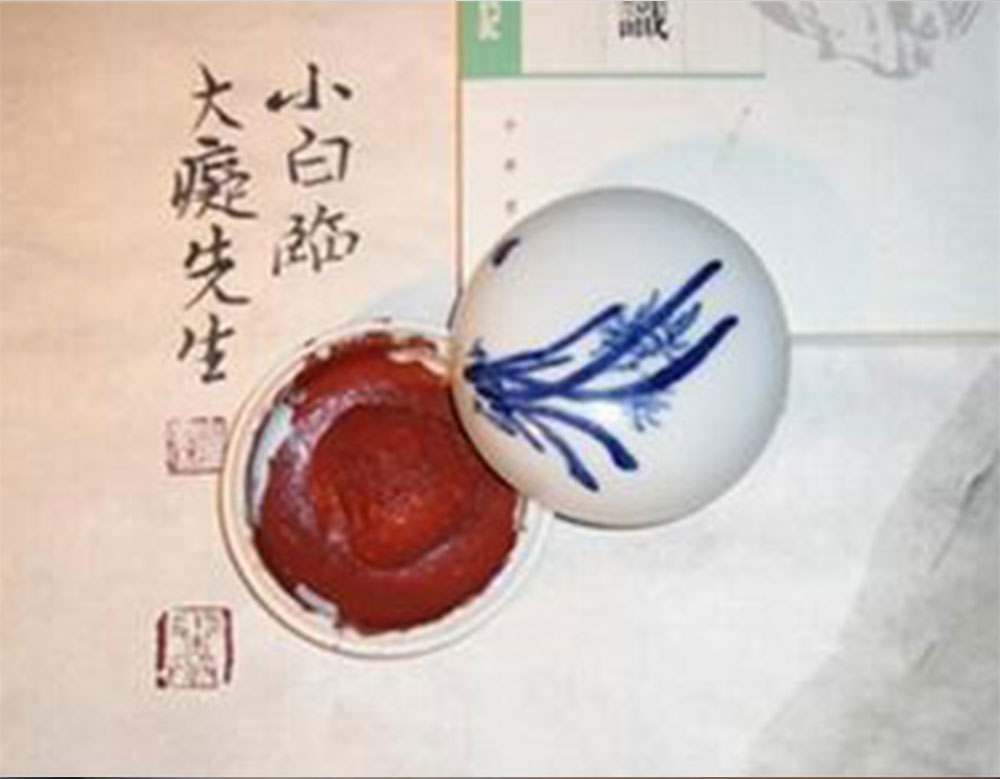
Ink pad maintenance
1. When the ink pad is stored for a certain time, the ink will float up, so it should be stirred frequently to make the ink and color even.
2. The inkpad is cold and should be placed in a warmer place in winter.
3. The ink pad has been used for a long time, and the oil content is gradually withering. You can add a proper amount of white castor oil that has been stored for a long time to mix well. However, new oil shall not be used to prevent the ink from seeping out. Manufacturers usually support processing. If you don't want to refuel yourself, you can contact the manufacturer.
4. The ink pad is best stored in the porcelain cylinder. Because the porcelain cylinder does not leak oil, it can also maintain the quality of ink pad for a long time.
Identifying inkpad
How to identify the quality of inkpad? In order to ensure the permanent value of collecting calligraphy and painting works of art, it is directly related to the quality of inkpad. The high-quality inkpad is made of aged castor oil, natural mineral cinnabar mercury compound, absorbent mohair and other raw materials by hand tamping. To put it simply, cover rice paper with your ink pad, ignite it with a lighter, shake it on the back, and heat it. After burning, the low ash red brown ink pad is the vermilion ink pad, and the reverse is the pigment ink pad. The vermilion ink pad has bright colors, side light square crystals, good hiding power, strong corrosion resistance, and is insoluble in water. Those that fail to achieve the above effects are inferior products, which are not conducive to the appreciation of calligraphy and painting collectors.
Precious inkpad
Excellent inkpad is valuable. In ancient times, it was common to exchange one or two gold for one or two inkpad. In the past hundred years, in the minds of calligraphers and painters, especially impressionists, the Xiling inkpad made by Xiling Seal Engravers Society is as precious as gold. This is because Xiling Seal Engravers' Society has made its own inkpad since the early days of its establishment. It has accumulated rich experience in making inkpad with excellent texture and has been favored by famous calligraphers, painters and seal carvers, and is famous at home and abroad.
The production of inkpad in Xiling has a history of nearly a hundred years, and many experts have emerged, among which Zhang Lu Nunnery is the most famous. Zhang Lu'an, a native of Cixi, Zhejiang Province, is an old member of Xiling Engravers' Society. He has devoted his life to making inkpad, and his skills are extraordinary. Zhang Lu'an, a famous collector at that time, was also keen on collecting famous seals and refined seal manuscripts of previous dynasties besides making inkpad.
In April 1962, after Zhang Lu'an died of illness at his residence in Shanghai, his family members donated to the country more than 2000 copies of Qin and Han bronze seals, 1525 copies of seals engraved by famous artists and seals of all dynasties, including 200 copies of refined, isolated and rare copies of the Ming Dynasty, to the Xiling Seal Engravers' Society in accordance with his will. Zhang Lu'an's death was undoubtedly a great loss to the production of Xiling inkpad. By the "difficult period" in the early 1960s, the production of Xiling inkpad had stopped.
Mr. Zhang Zongxiang, the curator of Zhejiang Library and a great calligrapher, has a special liking for Xiling inkpad and is highly respected. In the winter of 1962, the Xiling Seal Engravers Society held a general meeting of members in Hangzhou Hotel to discuss the commemoration of the 60th anniversary of the establishment of the society in 1963. At the meeting, Mr. Zhang Zongxiang, who was newly elected as the director of the Preparatory Committee, mentioned in his speech that the production of Xiling inkpad should be resumed. He said excitedly: "In the past, Xiling inkpad was a famous brand, famous both at home and abroad. Its characteristics are: exquisite workmanship and careful selection of materials; it is not only never fading, but also always bright, and is welcomed by famous artists at home and abroad. Xiling inkpad is one of the characteristics of our seal society, and it should be actively resumed."
Later, Zhang Zongxiang, who was elected as the president of the Xiling Engravers' Society, was 82 years old and still wanted to resume the production of Xiling inkpad. He once proposed to Sun Xiaoquan, who was then the director of the Hangzhou Municipal Bureau of Culture and the vice president of the Xiling Engravers' Society, that "the production of Xiling inkpad was once the best of Zhang Lu'an's skills, but unfortunately he has died; now there is still Han Deng'an's younger brother and daughter-in-law who are the most skilled. Please ask her to do it." Han Junzuo and his wife, Han Dengan's younger brother, not only restored the famous Xiling inkpad production, but also cultivated a group of new people, making the traditional Xiling inkpad production passed down from generation to generation.
At present, Xiling Engraving Society has 10 varieties and more than 20 product series, such as "Super Zhu" and "Super Danding", and the "Xiling" inkpad trademark has become a masterpiece in Zhejiang Province
Name: Debin Zhou
Mobile:+86 15026466402
Tel:+86 15026466402
Whatsapp:+86 15026466402
Email:ayan@ayanstamps.com
Add:1116, Building E, Greenland Center, Baohe District, Hefei, Anhui 230000, China